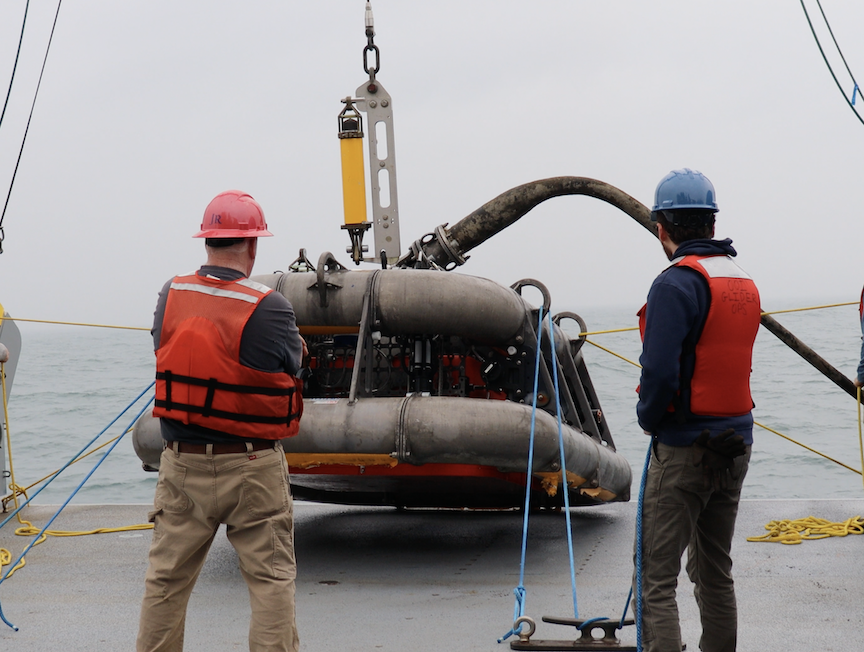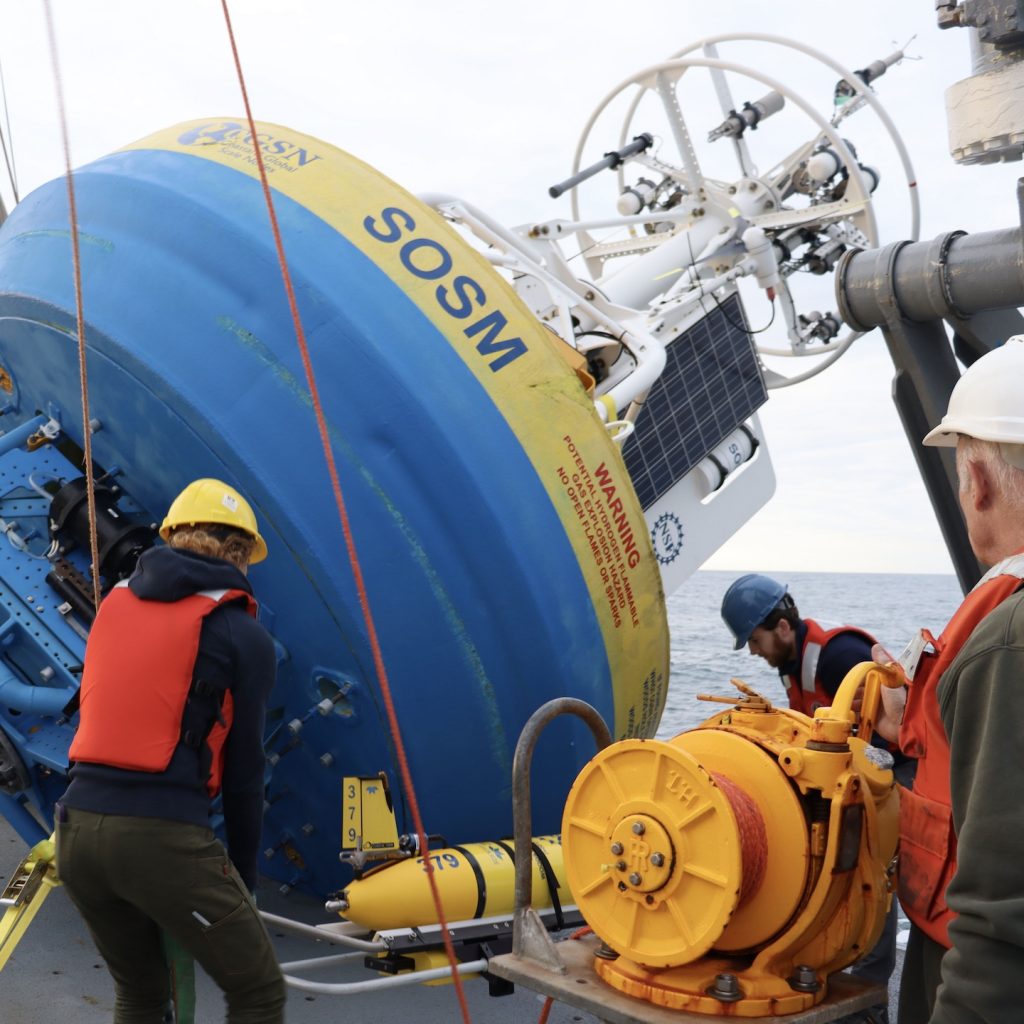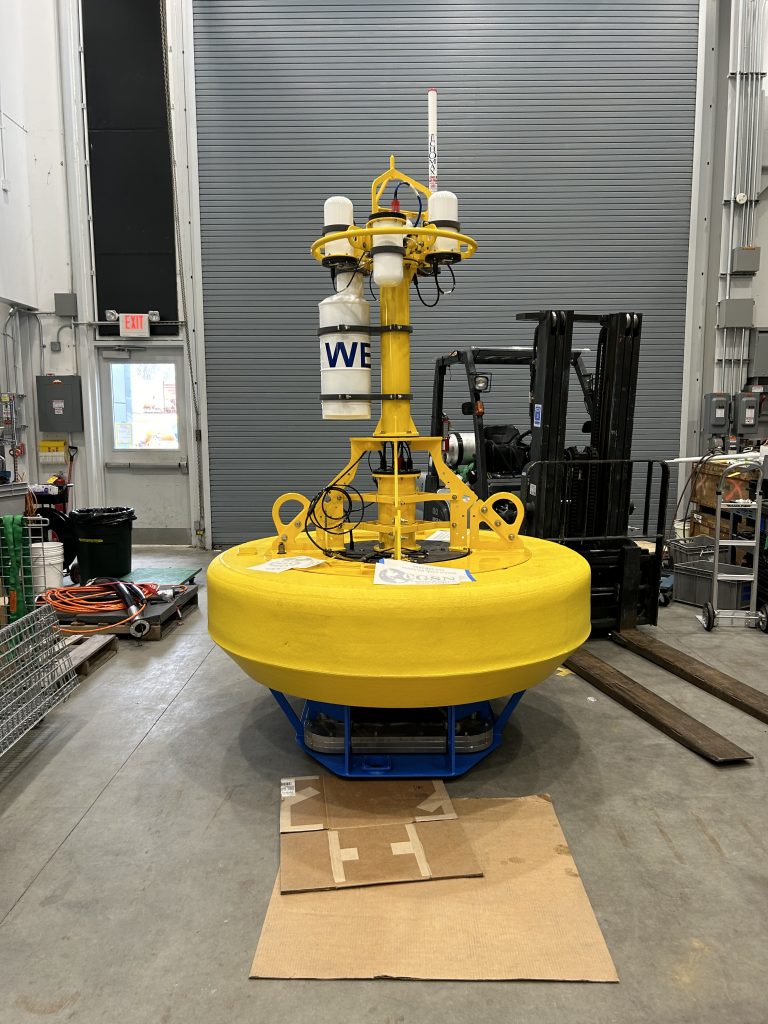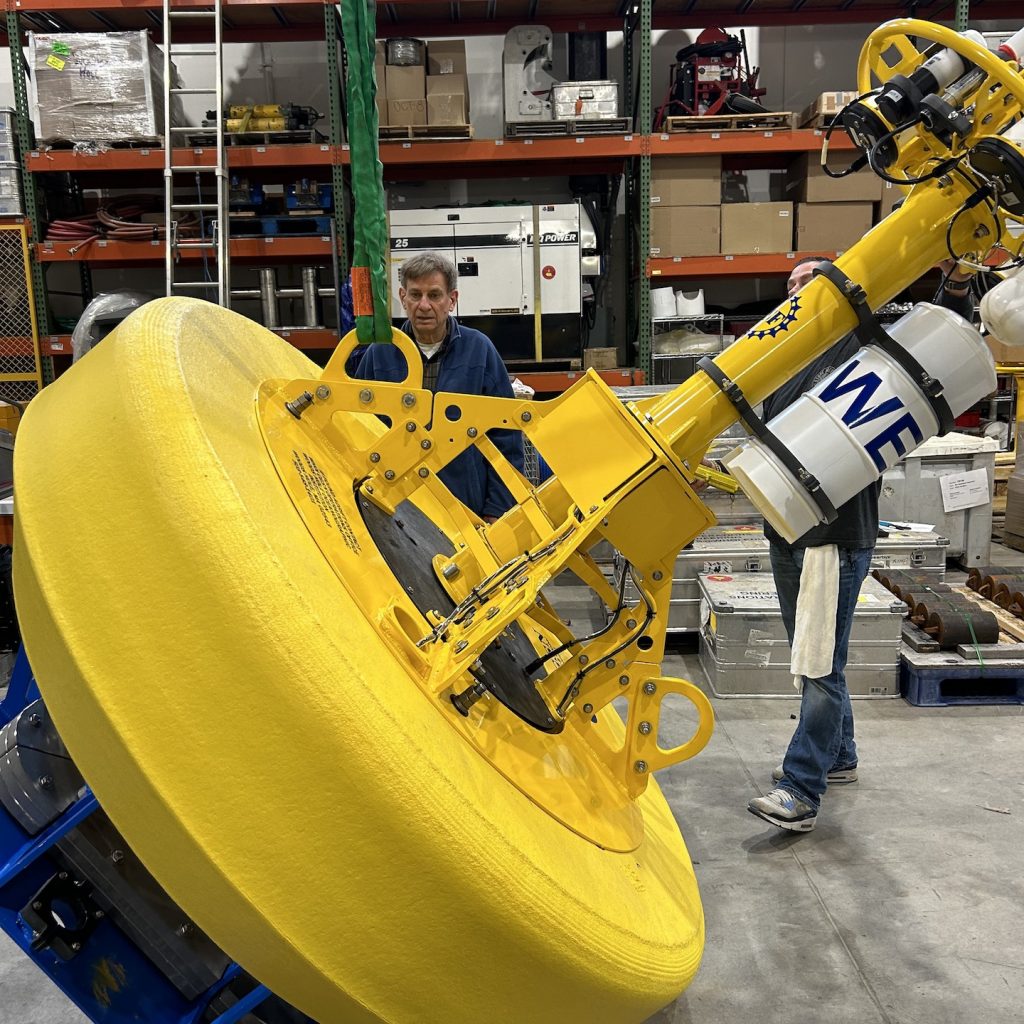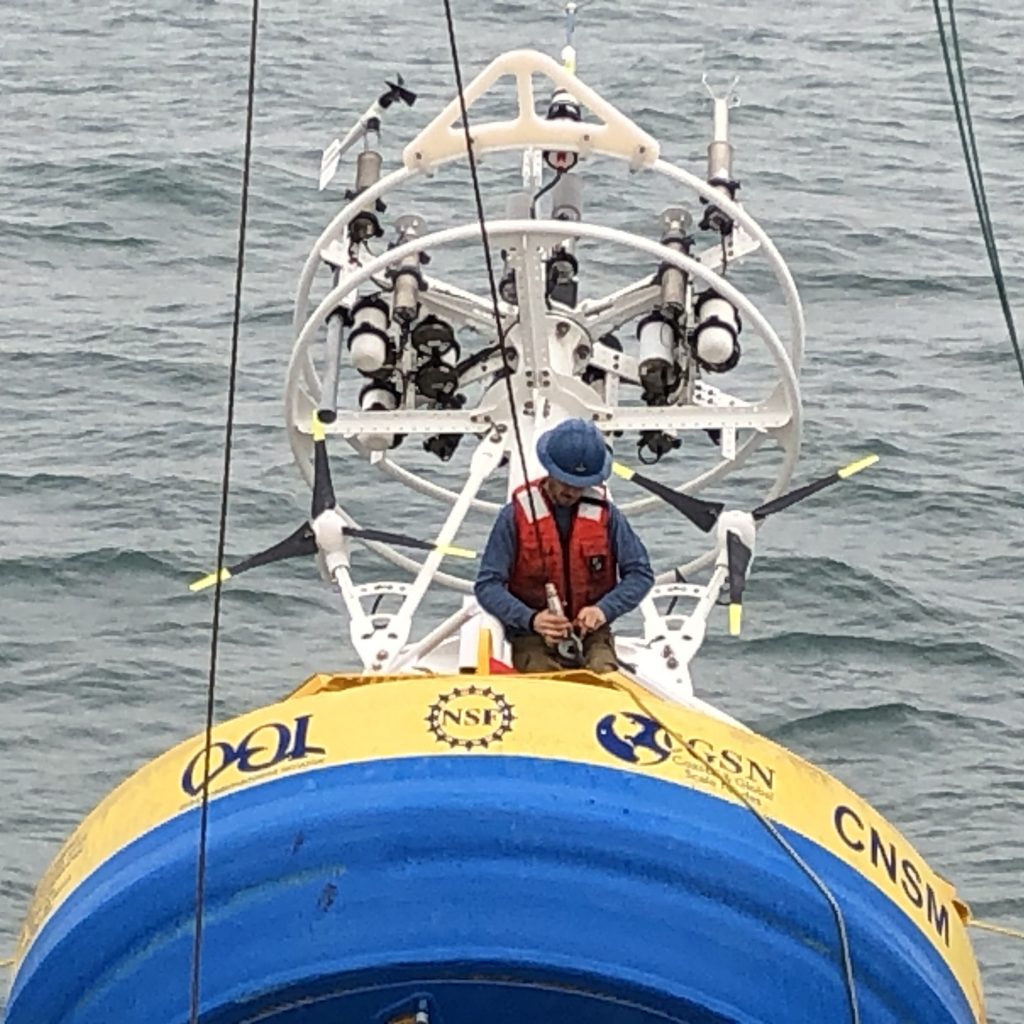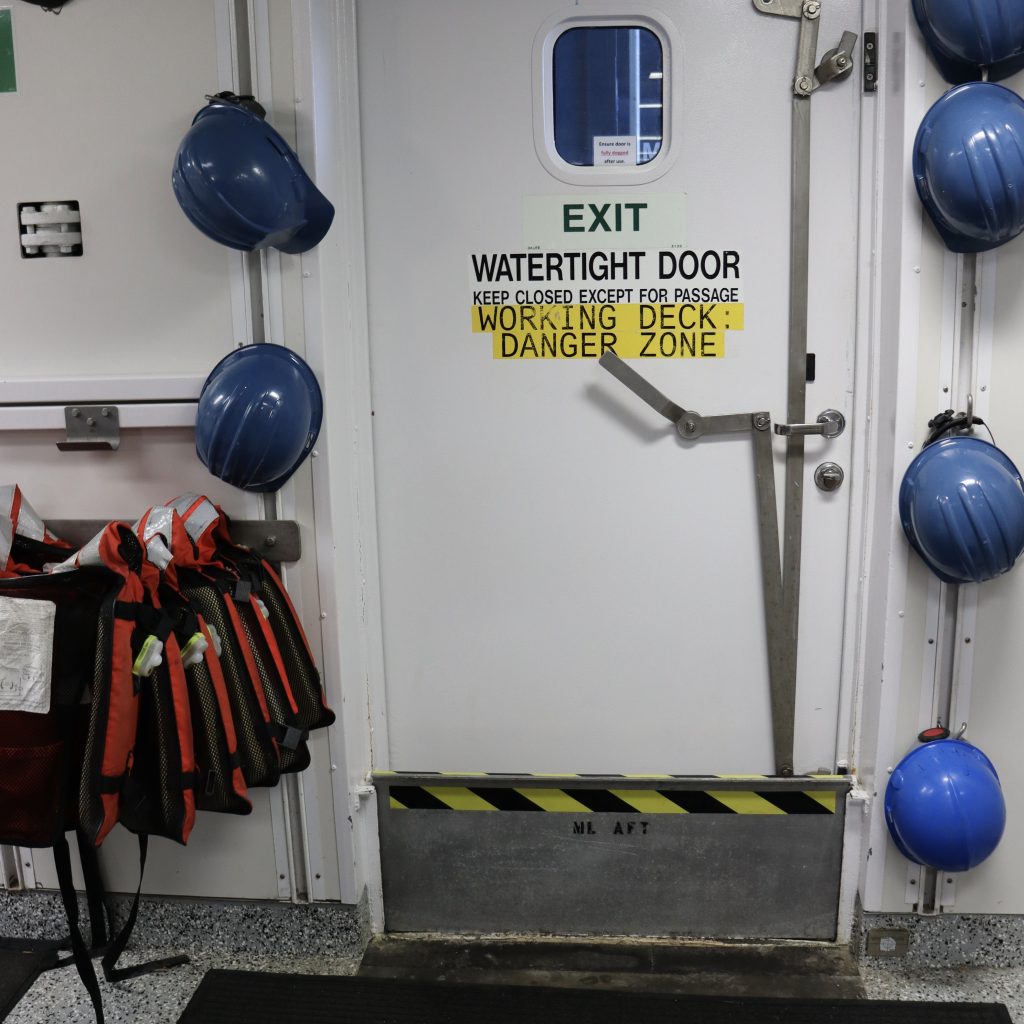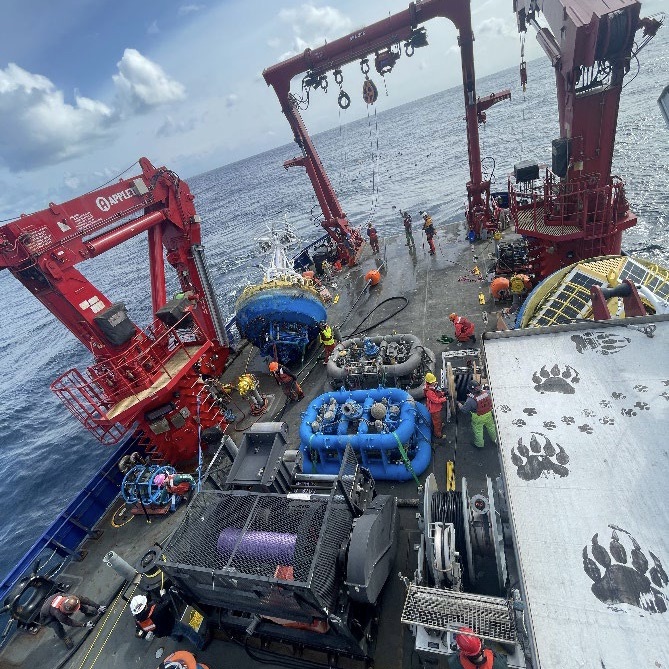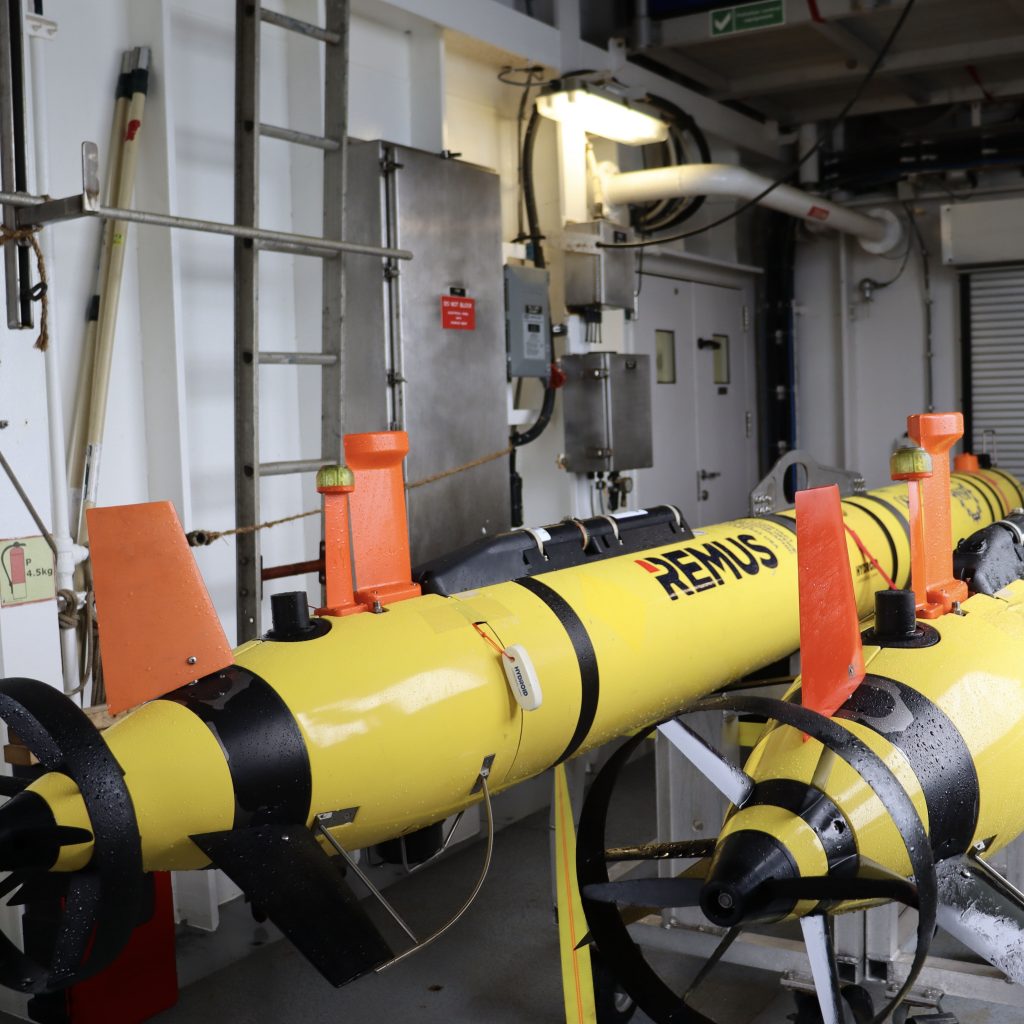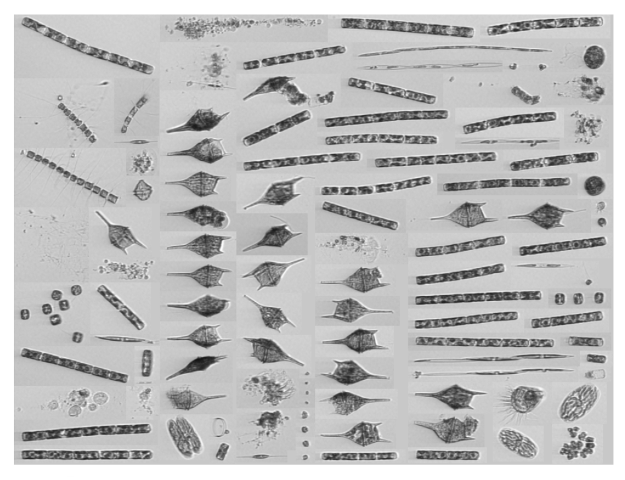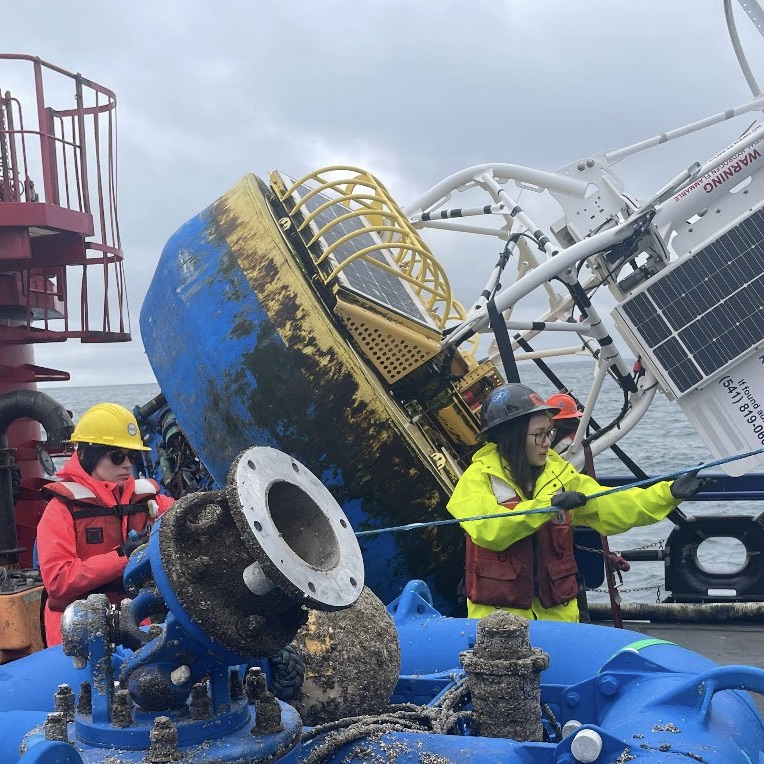Updates
Third Surface Mooring Deployed
The rear deck of the R/V Neil Armstrong is feeling a little empty with the successful deployment of the third and final surface mooring. This time it was the Southern Surface Mooring. The skies had cleared, the swell lessened, and many on the back deck saw a humpback whale breech as the mooring entered into…
Read MoreGlider On Its Way
Glider Lead Diana Wickman and Glider Tech Andy Robison gently lift Glider 379 into the water for its six month deployment within the Pioneer Array in the Mid-Atlantic Ridge. Chief Scientist Al Plueddemann handles the tugger, which helps lift the 123 pound glider into the water.
Read MoreMore Prep for Leg 2
Getting ready for the second leg. Kris Newhall and Mike Robinson integrate the tower and hull of the new Shallow Water Mooring (SWM). Two new SWMs will be deployed at Pioneer MAB in 25-30 meter water depths.
Read MorePrep Back Home
Don Peters and Kris Newhall measure the dry weight and verify the stability of the Shallow Water Mooring (SWM) buoy. The SWM design developed by WHOI Principal Engineer Don Peters, when combined with the Prawler profiling vehicle and instruments on the buoy hull, will be able to sample the upper 80% of the water…
Read MoreSecond Mooring Deployed
The second mooring of the Coastal Pioneer Array MAB, the North Central Surface Mooring, was successfully deployed today from the R/V Neil Armstrong. The team made it look easy! For those who lack time, we’ve sped it up to give you an idea of what’s entailed.
Read MoreFrolicking Sea State
The sea was rocking and rolling a little bit yesterday causing the “wet lab” where we work aboard the R/V Neil Armstrong to live up to its name. The metal door jam at the bottom with yellow and black tape was installed as a preventive measure to keep the working space dry. Credit: DT Crist © WHOI.
Read MoreWinches and Cranes Galore
Working smarter, not harder. A picture of many heavy objects being moved without anyone carrying anything by hand aboard the R/V Sikuliaq during the Endurance 20 expedition. Note the bear tracks on the roof in recognition of Oregon State University’s mascot, “Benny the Bear.”
Read MoreRemarkable Underwater Robot
Two REMUS 600 autonomous underwater vehicles (AUVs) are components of the Coastal Pioneer Array at its new location in the Mid-Atlantic Bight (MAB). Their mission is to collect data through the water column and in between moorings, serving as an additional data source and validating data collected at the stationary moorings. The two AUVs at…
Read MoreHistoric, Continuing Collaboration
The U.S. National Science Foundation Ocean Observatories Initiative (NSF-OOI) and the Northeast U.S. Shelf (NES) Long-Term Ecological Research (LTER) project have been collaborating since 2017, when the original OOI Coastal Pioneer Array was deployed 75 nautical miles off the coast of Martha’s Vineyard. Representatives from the NES-LTER project would join the Pioneer Deployment and Recovery expeditions in…
Read MoreUNOLS Volunteers Pitch In
The Endurance 20 team includes two UNOLS Cruise Volunteers on each leg. These volunteers are graduate students looking for opportunities to go to sea. On this leg, Marlena Penn and Cassia Cai joined the Endurance 20 team aboard the R/V Sikuliaq.
Read More